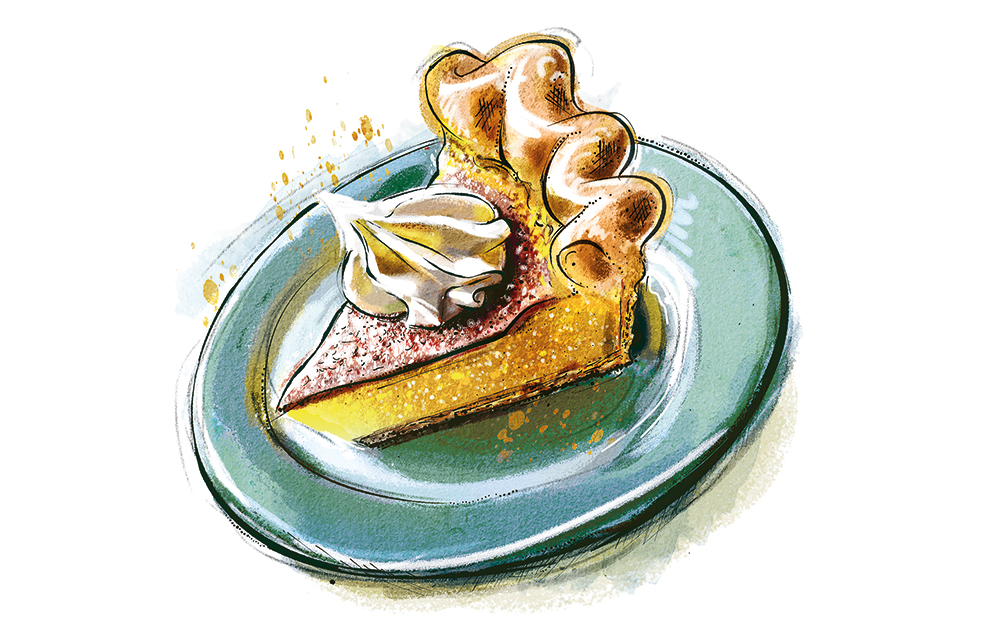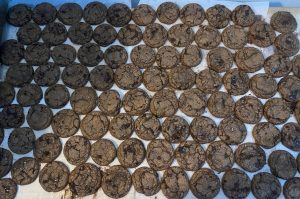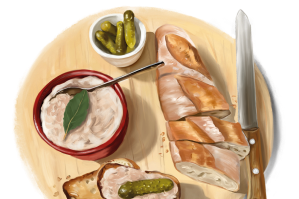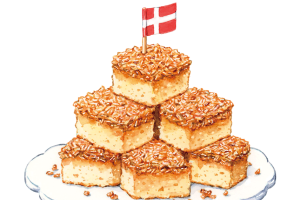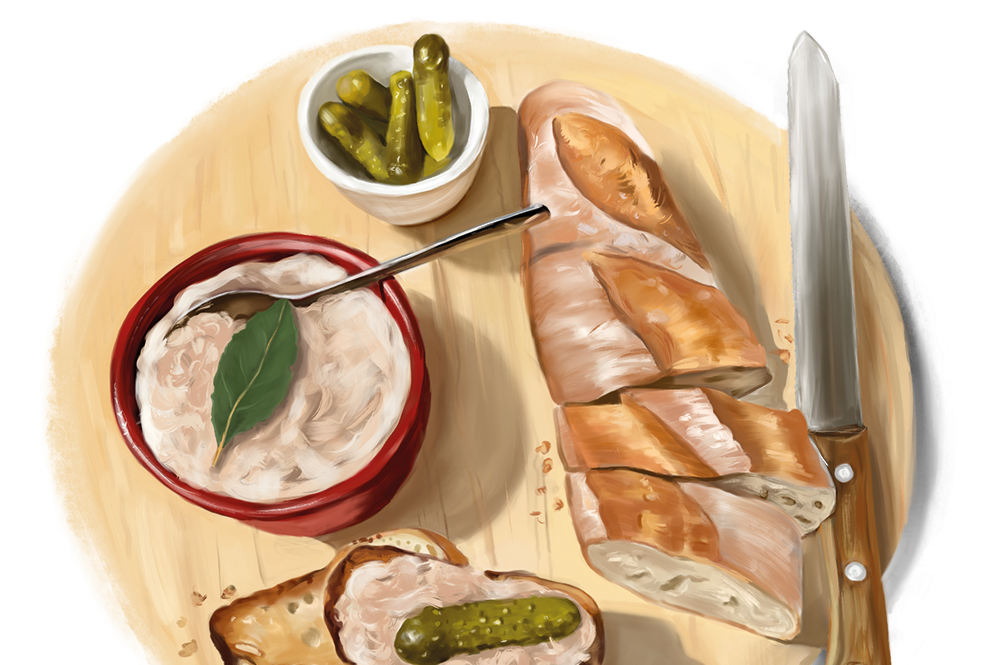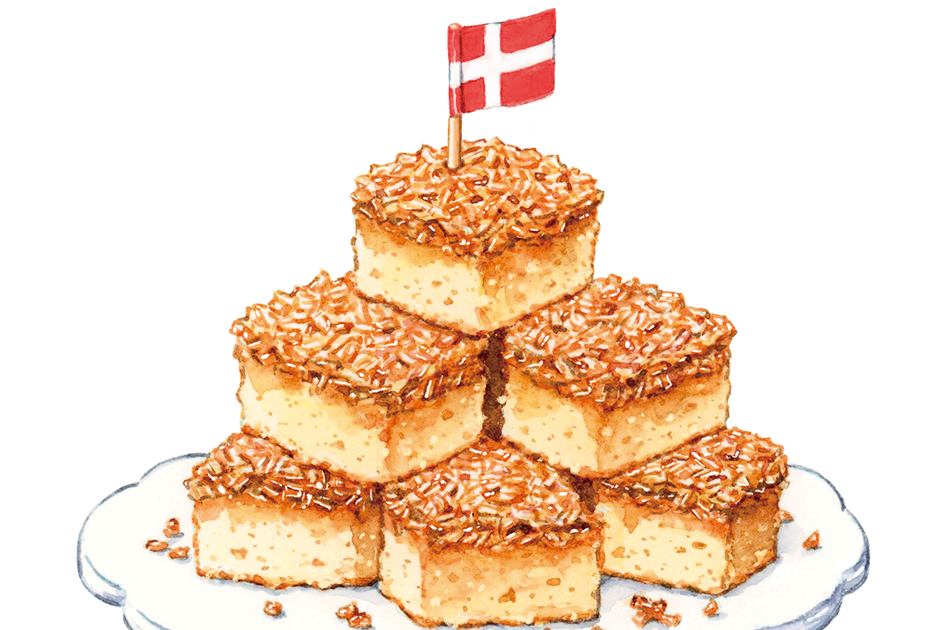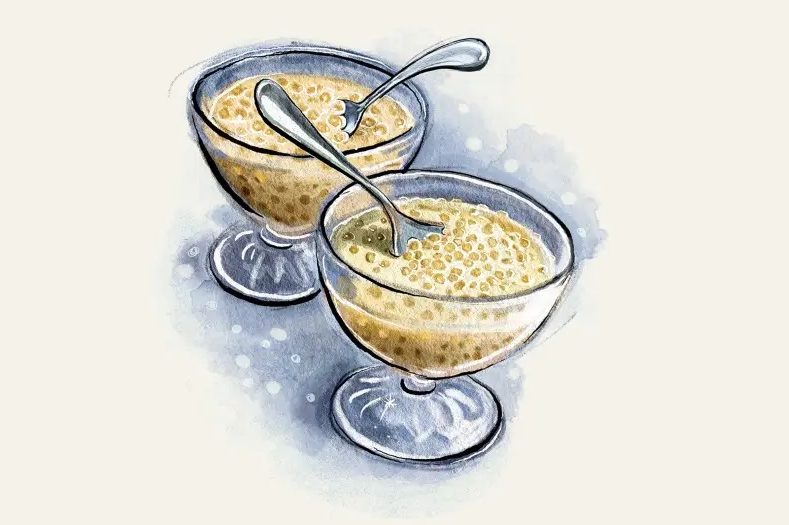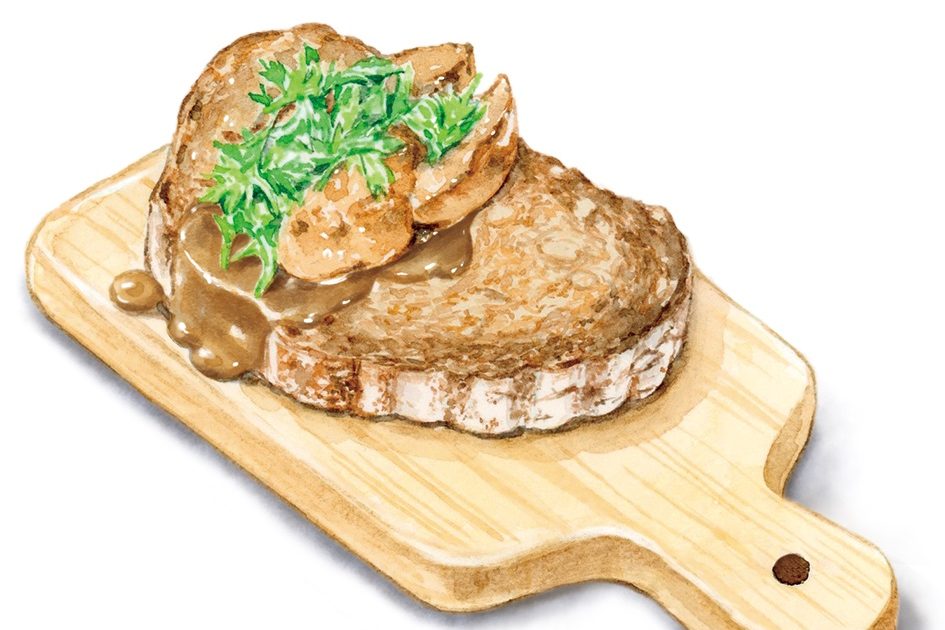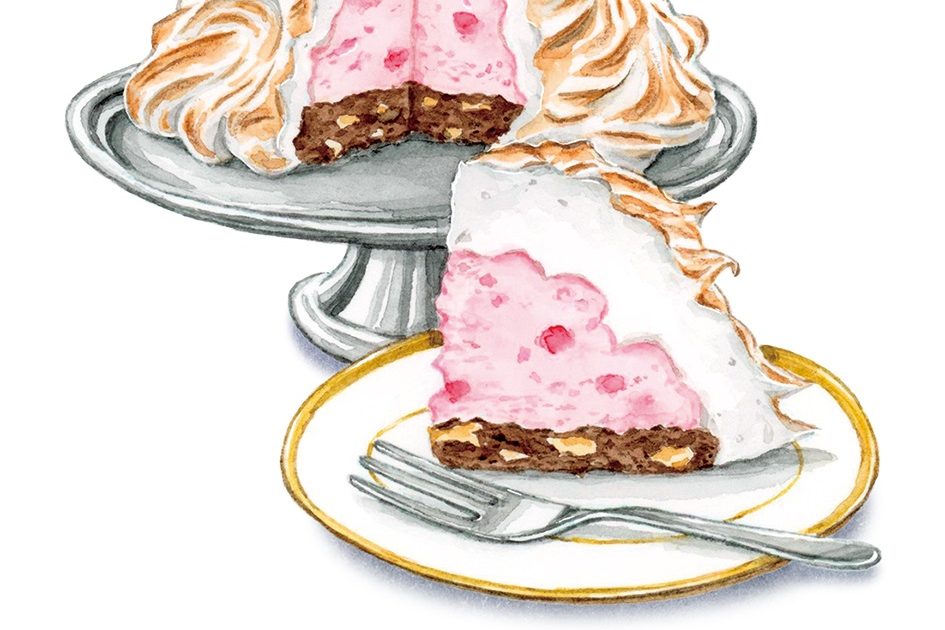Chess pie was, in one sense, new to me when I started learning about it a few months ago. I’d never heard of this favorite of the South until I came across it in a pie-centric cookery book. But in another sense, it’s extremely familiar — both to me and to anyone who’s ever eaten a pie or a tart before. Chess pie is a bit like an ur-pie, made with the most simple, most essential of pie ingredients.
That’s possibly where its name comes from: the story goes that in the 1800s in Alabama, where nuts and other common pie fillings were expensive, a freed slave made a pie with the most basic of ingredients — eggs, sugar, butter, cream. When asked about it, she replied: “Oh it’s jes’ pie.” And, lo, thanks to a mishearing, chess pie was born.
It employs a classic American pie dough: all butter, barely sweetened and very flaky
Of course, there are other theories. One is that chess pie is actually much older than that, and comes from England. There are records of simple custard tarts, cooked to delay the spoilage that would occur if the ingredients were left raw, meaning that the pie could be left unrefrigerated in a “chest.” American writer and chef Lisa Donovan found a suggestion that the pie was originally made not with cornmeal, but with chestnut flour — hence “chess” — and that this only changed when the American chestnut tree fell victim to blight. The resulting pie was fantastic, but she remained unconvinced by this neat solution.
I suspect there is an element of truth to both of the principal origin stories: that a basic tart that could be left unrefrigerated was often made in England, but that chess pie as we know it originated in the American South as one of a host of make-do-and-mend pies during the Great Depression. There are a bunch of pies like this that use cheap and cheerful pantry staples and don’t rely on seasonality: vinegar pie for when citrus was hard to get hold of (which Laura Ingalls Wilder wrote about in her Little House on the Prairie books), transparent pie from Kentucky (which I’m afraid is just colorless rather than actually transparent), sugar pie (which uses milk or cream instead of buttermilk for the custard) and water pie (which just uses water and flour as the custard base).
Chess pie’s distinguishing characteristics are cornmeal — which gives the gentlest coarseness to an otherwise smooth filling — and a slightly acidic custard. It employs a classic American pie dough: all butter, barely sweetened and very flaky, it is perhaps slightly less elegant than a crumbly shortcrust cut flush against the sides of a fluted tin, but no less satisfying, with a thick, slightly undulating edge which gives that classic pie aesthetic. The trick, if you’re more used to making British or French pastry, is to stop before you reach the “breadcrumb” stage of combining the ingredients. The flakiness of the pastry relies on sweeps and blobs of butter in the dough, so bits of butter should still be visible, otherwise the pastry will be short.
When it comes to the custard filling, there are a couple of different types: lemon, chocolate and coconut are all popular, but the classic is buttermilk. And it’s my favourite both for its simplicity (which seems correct for such a pantry-based bake) and its ability to cut through the intense sweetness of these kinds of pies. The custard is uncooked before it goes into the blind-baked pie shell, and then baked at a very low temperature for a whole hour, until set at the edges and on top but with a very slight jiggle in the middle. The combination of whole eggs, cornmeal and lots and lots of sugar creates a distinctive, delicious crust on the custard.
Once completely cooled, the pie will cut beautifully into clean, blond slices — serve with a swirl of whipped (or squirty) cream piped perkily on top.
Makes 8 slices
For the pastry
– 5⅓ oz plain flour
– ½ tsp salt
– 1½ tsp sugar
– 4 oz cold butter cut into ½ inch pieces
– ¼ cup cold water
– 1 egg white
For the filling
– 10½ oz caster sugar
– 4 eggs
– 6⅔ fl oz buttermilk
– 2 tbsp cornmeal
– 2 tbsp plain flour
– vanilla extract
– ½ tsp fine salt
– 3½ oz butter, melted and cooled
- First, make the pastry. Mix together the flour, salt and sugar, then rub the butter into the mixture until the smallest pieces are the size of peas
- Add the water and briefly mix until a rough dough forms. Roll into a ball, wrap in clingfilm and refrigerate for at least two hours
- Once chilled, roll the dough out into a thirteen-inch circle, and line a nine-inch pie plate or tart tin. Roll the overhang back on itself to create a thicker crust at the edge. Refrigerate again for an hour
- Preheat the oven to 350°F. Prick the pastry base lightly with a fork, place baking paper on the pastry and fill with baking beans or dry rice, right up to the top of the pastry. Bake for twenty minutes, then remove the baking beans or dry rice and baking paper, and bake for another ten minutes. Brush the hot pastry with egg white, and set to one side
- Reduce the oven temperature to 285°F. Whisk together the sugar and cornmeal in a large bowl, then add in the eggs, followed by the buttermilk, vanilla and salt and, finally, the melted butter. Put the pie crust on a baking tray, pour the filling into the pie and carefully transfer to the oven
- Bake for about an hour, until the crust is set and the centre of the pie just very slightly jiggly. Cool completely before serving
This article was originally published in The Spectator’s UK magazine. Subscribe to the World edition here.



